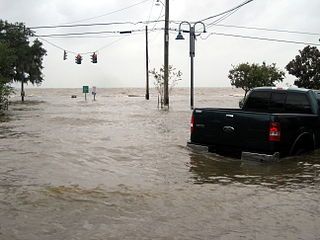From Guest Blogger Simon Thomas: Can SUDS stop the floods?

But firstly, I would like to get one thing straight. The small role I play in helping to improve the water management systems of the UK is conducted very much within the heavy engineering and manufacturing sector of the industry. As the managing director of a company that produces large diameter plastic pipes, the ongoing development of SUDS (or Sustainable Urban Drainage Systems for the uninitiated) has had very little impact on my day to day professional life, although that is not to say I don’t believe that it has a part to play in managing the over burdened water management systems of the UK.
The ethos behind SUDS and the crux of their sustainable benefits is that they deal with surface water as soon as rain falls, preventing the need to pipe large quantities of stormwater away, or hold it in attenuation tanks, ideally by infiltration if possible. They do this by mimicking natural pathways and processes. All extremely sensible of course and so it seems almost unbelievable that there has been yet another delay in introducing legislation to make sustainable drainage systems compulsory for new developments in England and Wales. Particularly in light of recent severe storms and floods which have seen large swathes of the country remain under water for weeks on end.
‘Green’ roofs, permeable paving (which allows water through to the soil below), retention ponds and grassland depressions known as swales, are all integral tools in the SUDS arsenal, all of which slow the flow, store it and encourage it to seep into the ground.
In Germany government financial incentives drove up numbers of green roofs by 19-fold in just 12 years and in Malmö, Sweden, regular flooding has been relieved by a network of green roofs, swales, ponds and mini-wetlands. Across the Atlantic several cities in America, including Portland and Philadelphia, have established SUDS led natural infrastructure programmes, and in the UK a nature reserve near Doncaster absorbed 200,000 cubic metres of floodwater during the catastrophic floods of 2007, saving thousands of homes. However, despite the successes SUDS programmes have not spread widely, largely due to the lack of legislation.
The growing SUDS movement goes against more traditional, heavy engineering methods of water management that are based on 19th century attitudes towards infrastructure. As population growth exploded in the 18th, 19th and 20th centuries, more primitive natural drainage systems gave way to engineered methods which sought to remove rainwater as quickly as possible, facilitating its passage back to the sea through a network of pipes and sewers, culverts and other managed systems. These systems remain the preferred method of water management to this day (albeit with vastly updated technologies in play), however with the current vogue for all things sustainable, it was perhaps inevitable that the SUDS lobbyists would start to make quite a lot of noise amid claims that sustainable solutions are the future of water and flood management.
But of course, they’re not are they? For the simple reason that despite the cleverly designed drainage ‘solutions’, once the ground is completely saturated the water has nowhere to go. And obviously it has to go somewhere, or else stay put. A scenario perfectly demonstrated by the ongoing flooding of the Somerset levels, large parts of which have been under water since early January, as sodden agricultural land doubles as natural lakes.
So before the eco groups start to dismiss the role heavy engineering has to play in water and flood management in the 21st century, it’s important to remember that whilst SUDS have an important role to play in supporting water management across the country, their role is very much in the supporting category. However, that is not to say that theirs is not a valued contribution.
However it is a valued contribution that looks unlikely to obtain full maturity any time soon as Ministers have missed target after target to bring SUDS legislation to the fore. Their most recent target is April this year, a deadline that has already bitten the dust as the Department for Environment, Food and Rural Affairs has confirmed that plans to make SUDS compulsory for developments over one property have been pushed back again to take account of the outcomes of consultations with industry stakeholders. Consultations that have experienced delays exacerbated by “an overly idealistic interpretation of SUDS as natural, above-ground drainage features”, according to the British Water Sustainable Water Management Focus Group.
In my view labelling SUDS as ‘overly optimistic’ is a fairly accurate way of describing the view of the wider water management industry at large, particularly those, like me, involved in heavy engineering. And whilst no one is denying the need for more natural solutions it must be realised, especially given recent and ongoing flooding events, that whilst they have a place alongside engineered water management systems as a drainage aid, particularly in high risk areas, they are not to be regarded as an all encompassing replacement for engineering.
Nevertheless, I await the next installment of the SUDS saga with baited breath.
Simon Thomas is the managing director of water management solutions company, Asset International www.weholite.co.uk

Attention is increasingly returning to measures that mimic the natural processes: reducing the amount of water reaching the man-made systems. Boringly entitled ground drainage systems (but more attractively acronymed as Suds) slow the flow, store it and encourage it to seep into the ground.